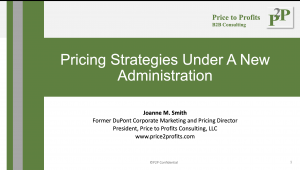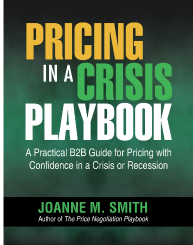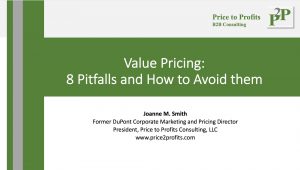
Unlocking Profitable B2B Growth Through GenAI
From evaluating potential buyers to providing real-time research assistance, the use cases for generative AI continue to grow.
ISBM at the Penn State Smeal College of Business – Academic Institute supporting B2B Research. Switch to the ISBM-Corporate website.

From evaluating potential buyers to providing real-time research assistance, the use cases for generative AI continue to grow.

AI can identify market opportunities, personalize content, customize pricing, automate selling tasks, and improve workforce performance.

Tariffs, taxes, foreign policy…the list goes on. With the change to a new administration – one focused on making significant change at a significant pace – your pricing strategies & tactics may need to change. Some policy changes may be a threat to your profitability while others offer a potential to grow your profits.

An emphasis on leadership, distinctiveness, and functional benefits can help B2B brands achieve pricing power.

Effective marketing decision making often requires both qualitative and quantitative analysis. Many marketing analyses across the 4Ps can be supported by quantitative analyses, for example market size estimation, determining economic value to customers, demand generation and customer acquisition with the help of customer lifetime value analysis, channel economics, product cannibalization, market share analysis, and pricing. In this technical Harvard Business School note, Sunil Gupta summarizes how these core metrics are calculated and applied.

We are heading towards a recession that may be worse than the Great Recession following the 9/11 attacks. Depending on scientific progress, we may be in a downturn for many months to come. Price pressure is inevitable in a downturn. Joanne Smith, who lead the corporate pricing organization of Dupont in the five years before and during the 2009 recession, has written a very timely book on how to price in a recession: “Pricing in a Crisis Playbook: A Practical B2B Guide for Pricing with Confidence in a Crisis or Recession”.

ISBM’s introductory episode of the Marketing in Uncertain Times series was an insightful look at the power of pricing , channels, and B2B Business Strategy during a time of crisis and disruption. ISBM partner and instructor, Ralph Cummins of EMM Group moderated this panel discussion addressing these areas of concern with candid responses of practical advice and foresight. Highlights of this Town Hall include pricing power, ‘Survivalist Entrepreneurship’, and the focus on existing customers.

Many B2B companies are embracing value-based pricing due to its large potential to increase profitability, yet many of these companies struggle to achieve these profits. They may start out strong, achieving price increases for a few products, but ultimately have difficulty getting their organizations to embrace, implement and/or sustain the value-based pricing journey. In this webinar, Joanne shares her insights on common pitfalls that she sees numerous B2B companies fall into as they begin their value-based pricing, marketing and sales journeys.

Successful pricers have started to piece together the digital bread crumbs to now provide a digitized version of the traditional pricing solution. A dynamic pricing solution provides customized price recommendations that are in line with the context of the product(s) / customer segments and associated pricing power. Come join us as we discuss approaches, techniques and outcomes from using digital enablers to provide dynamic support to a complex and complicated market place. Prabhu Mishra (Deloitte) presents how to use the traditional framework (identify business value, price to value & capture price) with a digital twist as we apply modern day analytics and capabilities to defend and enhance the traditional sources of price value and premium.

In increasingly competitive markets, B2B companies need new ways to innovate, drive revenues, and create competitive advantage. By creating a hybrid bundle—an offering that combines a product with a service—firms can improve their top and bottom lines. However for a hybrid bundle is to be successful, managers need to understand which potential combinations are most appropriate under what conditions. In this webinar, Dr. Shankar, based on his extensive research on hybrid bundles, presents a framework to successfully design and price hybrid bundles. He introduces and explains four rules that help managers discover which hybrid combination is most likely to be successful for their firm.
© 2024 ISBM – Institute for the Study of Business Markets

484 Business Building
University Park, PA 16802
Phone: 814-863-2782
Fax: 814-863-0413
Email: ISBM@psu.edu
© 2020 ISBM – Institute for the Study of Business Markets